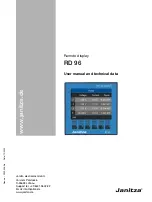
User Manual
Doc. Number: ESO-323064
Doc. Version: 2
Released on:
Page:
52 of 82
Document Classification: Public
•
For a point source, the SNR is given per pixel in the spectral dispersion and not per
resolution element. To compute the SNR for a resolution element the right number
of pixels needs to be combined (i.e., typically
2 pixels for the 0.2”
slit).
•
For an extended source, the calculated SNR corresponds to that obtained by
integrating the signal over the area A = slit with x FWHM of the seeing in the spatial
direction and is given per pixel in the dispersion direction (and not per resolution
element).
•
ETC
outputs the on-source integration time. Depending on observing technique and
accounting for overheads, the total execution time will be longer (see Section 5.4).
Select Plots
tab:
•
By the default the ETC displays the SNR per spectral pixel, however the user can
request a number of different plots related for instance to the sky and/or target
signal, and to the throughput efficiencies.
•
It is always useful to ask the ETC
to show the SNR as a function of wavelength due
to the presence of numerous telluric features: a small difference in the requested
wavelength may lead to very different SNR for a given total integration time or,
alternatively, very different integration time for a requested SNR.
•
From the ETC page users can access to a python script that allow to download the
output of the requested plots in ascii file
5.4 Instrument overheads
In Phase 1 users are requested to provide the total execution time, which is given by the
total exposure time (i.e., open-shutter time) plus the overheads.
Estimated overheads related to both telescope and instrument are listed in Table 7
However, an alternative easy way to calculate the overhead is to create a CRIRES mock
OB by using p2demo available at:
https://www.eso.org/p2demo/home
Under the CRIRES programme ID 60.A-9253(K) user finds a folder named USD-Tutorials
containing examples of OBs specifically designed for different observing strategy. By coping
one of such OBs into a new folder, user is able to change the on-source integration time,
as well as number of exposures, offsets etc. and then to run the time calculator software,
which will ultimately deliver the final total integration and execution time.
Table 7: Telescope and Observation overheads. (*) When the metrology is enabled only in
the acquisition template, no overheads are associated to.
Action
Times (s)
Telescope
Preset
360
CRIRES
Acquisition with AO
300
CRIRES
Acquisition without AO
180
CRIRES
Read-out
2.4 + 1.43 x (NDIT-1)
















































